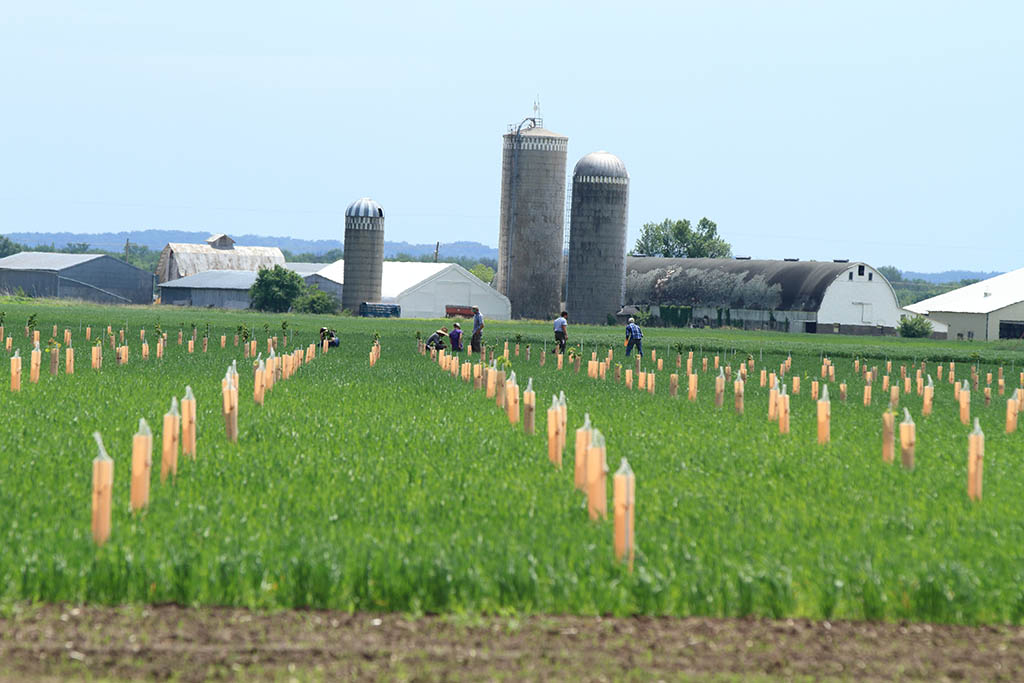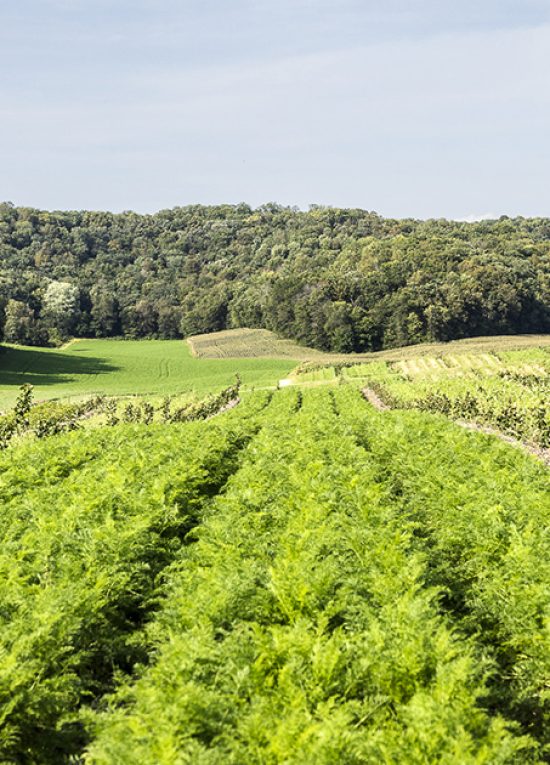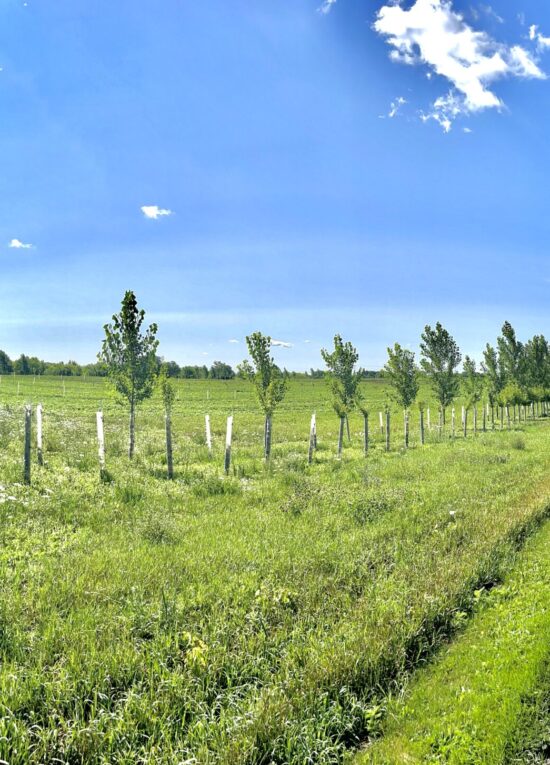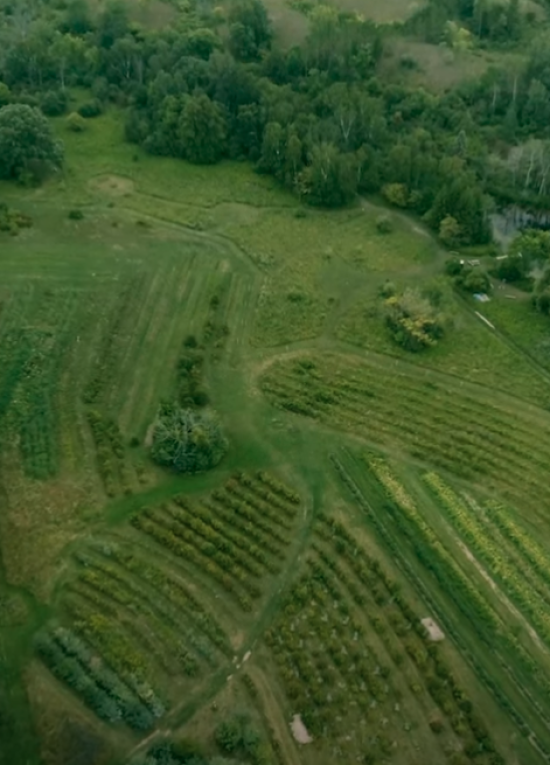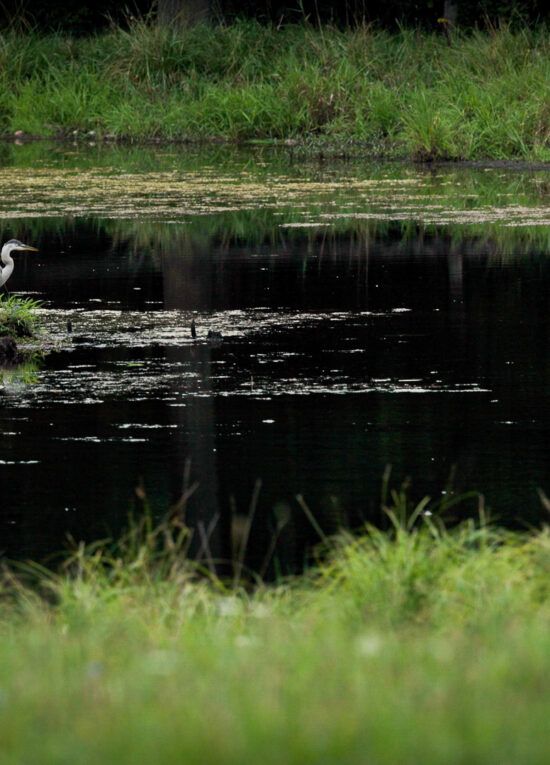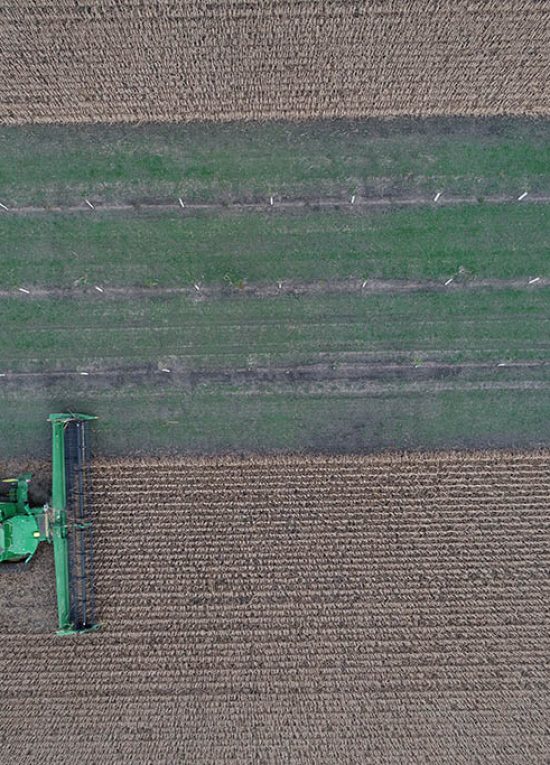Fields Restored
Oregon, IL
Savanna Institute Demonstration Farm
Agroforestry Systems:
Alley cropping
Riparian buffer
Silvopasture
Windbreak
Farm Information
Fields Restored Demonstration Farm in Northern Illinois features alley cropping, a windbreak, silvopasture, and a multifunctional riparian buffer, which are four of the five agroforestry practices supported by the USDA. The Williams family owns and manages Fields Restored in partnership with the Rodgers family and the Savanna Institute. The farm includes just over 15 acres of fruit and hay alley cropping, which provides food for livestock, wildlife, and human enjoyment.
The alley cropping system is planted with hazelnuts, juneberries, blackberries, and other productive fruit and nut species. The Williams family stewards the crops for humans and helps maintain the alleys, and the Rogers family harvests hay for their cattle. This system is uniquely theirs – designed to match the equipment of both farm families and the needs of each production system. Another key consideration in design: the ripening windows of each food crop. The system is designed so that the hay production windows and fruit harvest windows do not overlap. Hay production between fruit and nut plantings not only helps produce a second crop, but it also maintains the groundcover between rows, which helps keep roots in the ground and weed pressure low.
The windbreak, located on a ridge on the north side of the alley cropping acres, provides a buffer between adjacent conventional crop land and their specialty crops, while also serving as a wind block, erosion stop, wildlife habitat, and additional productive acres. The windbreak features a multispecies design with a combination of fast- and slow-growing trees with complementary growth habits to create the most effective buffer. These species include hybrid poplar, hazelnuts, willow, and several types of evergreens.
In 2020, the relationship deepened among the partners when the farm added a 15-acre silvopasture and riparian buffer demonstration that was designed by the Savanna Institute to support the Rodgers family’s cattle operation. The silvopasture planting includes islands of native trees planted into a continuously grazed pasture. Designed as an experiment, this planting features two different sized islands, 6x6m and 12x12m, and four different combinations of tree species that are compatible with cattle while supporting pasture fertility and limiting shade impact. Those species include black walnut, hybrid poplar, alder, and a mix of native species well-suited for the oak savanna ecosystem that covers the Upper Midwest. The islands are fenced, with no groundcover, to protect trees during establishment from cattle in the pasture. The pasture also features a border of oak, willow, and black locust trees that provide shade and fodder for cattle.
A small, 2-acre riparian buffer was also established to help protect a creek that runs through the southern portion of the pasture. Designed to be edible and multifunctional, this riparian buffer features 13 rows of trees and shrubs to help stop and slow water, catch and hold nutrients from the adjacent pasture and croplands, and protect the creek from further erosion. Species used include: willow, button bush, dogwood, elderberry, pawpaws, persimmon, riverbirch, American plum, and shagbark hickory. We’ve fenced it off to keep cattle out of the creek and protect trees during establishment. This small planting can have a big impact as we experience more extreme rain events, especially during times where adjacent croplands may have bare soil.
Fields Restored is a powerful example of the impact that engaged, passionate, and conservation-minded farm owners can have when they join together with other partners and families to protect the ecosystem. It’s part of a network of demonstration farms operated by the Savanna Institute in Illinois and around the Midwest. Demonstration farms serve as learning hubs for farmers and landowners who want to add agroforestry to their sustainable farming practices.
Research in Progress
- 13-acre silvopasture by addition experiment, featuring three sizes of “tree islands” with five different species combinations:
- Speckled alder, speckled alder and black walnut, black walnut, hybrid poplar, and native species mix
- 2-acre multifunctional riparian buffer that includes species for water quality, wildlife support, beauty, and profit, including:
- American plum, pawpaw, elderberry, red dogwood, yellow dogwood, buttonbush, willow, river birch, persimmon, and shagbark hickory
- The Williams family also supports 14 acres of fruit, nut, and hay alley cropping and a productive windbreak adjacent to the silvopasture

“We made a commitment to adding trees to family farmland out of concern for its long-term sustainability and environmental diversity. Our father instilled in us a lifetime commitment to responsible land stewardship, and we believe it is important that farmers and landowners are encouraged to institute agroforestry practices to protect and preserve the planet for the future.” Scott Williams, Fields Restored, Oregon, IL

One-On-One Support for Farm Planning
Technical Service Program
Get help planning your perennial farm system. Our Technical Service Program is here to guide you through the process of planning, funding, and planting trees on your farm.
